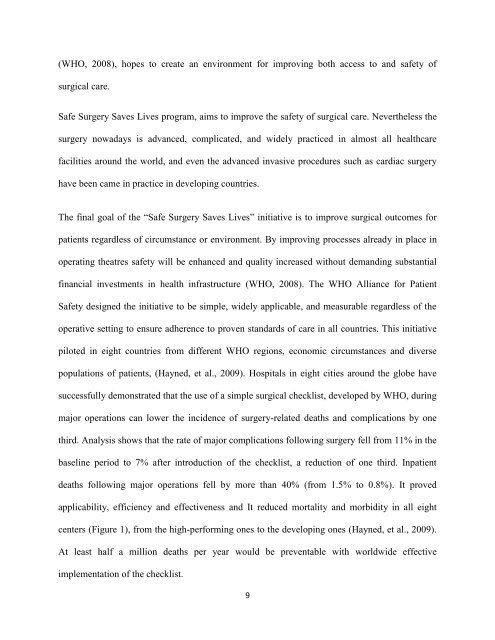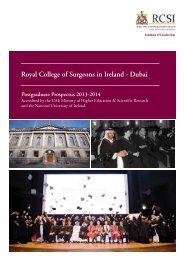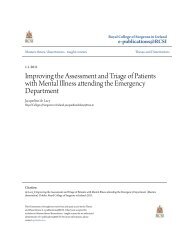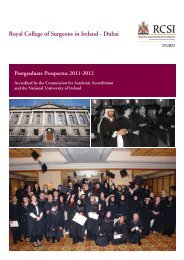Implementation of Safe Surgery Saves Lives initiative in Ahmed ...
Implementation of Safe Surgery Saves Lives initiative in Ahmed ...
Implementation of Safe Surgery Saves Lives initiative in Ahmed ...
- No tags were found...
Create successful ePaper yourself
Turn your PDF publications into a flip-book with our unique Google optimized e-Paper software.
(WHO, 2008), hopes to create an environment for improv<strong>in</strong>g both access to and safety <strong>of</strong>surgical care.<strong>Safe</strong> <strong>Surgery</strong> <strong>Saves</strong> <strong>Lives</strong> program, aims to improve the safety <strong>of</strong> surgical care. Nevertheless thesurgery nowadays is advanced, complicated, and widely practiced <strong>in</strong> almost all healthcarefacilities around the world, and even the advanced <strong>in</strong>vasive procedures such as cardiac surgeryhave been came <strong>in</strong> practice <strong>in</strong> develop<strong>in</strong>g countries.The f<strong>in</strong>al goal <strong>of</strong> the “<strong>Safe</strong> <strong>Surgery</strong> <strong>Saves</strong> <strong>Lives</strong>” <strong><strong>in</strong>itiative</strong> is to improve surgical outcomes forpatients regardless <strong>of</strong> circumstance or environment. By improv<strong>in</strong>g processes already <strong>in</strong> place <strong>in</strong>operat<strong>in</strong>g theatres safety will be enhanced and quality <strong>in</strong>creased without demand<strong>in</strong>g substantialf<strong>in</strong>ancial <strong>in</strong>vestments <strong>in</strong> health <strong>in</strong>frastructure (WHO, 2008). The WHO Alliance for Patient<strong>Safe</strong>ty designed the <strong><strong>in</strong>itiative</strong> to be simple, widely applicable, and measurable regardless <strong>of</strong> theoperative sett<strong>in</strong>g to ensure adherence to proven standards <strong>of</strong> care <strong>in</strong> all countries. This <strong><strong>in</strong>itiative</strong>piloted <strong>in</strong> eight countries from different WHO regions, economic circumstances and diversepopulations <strong>of</strong> patients, (Hayned, et al., 2009). Hospitals <strong>in</strong> eight cities around the globe havesuccessfully demonstrated that the use <strong>of</strong> a simple surgical checklist, developed by WHO, dur<strong>in</strong>gmajor operations can lower the <strong>in</strong>cidence <strong>of</strong> surgery-related deaths and complications by onethird. Analysis shows that the rate <strong>of</strong> major complications follow<strong>in</strong>g surgery fell from 11% <strong>in</strong> thebasel<strong>in</strong>e period to 7% after <strong>in</strong>troduction <strong>of</strong> the checklist, a reduction <strong>of</strong> one third. Inpatientdeaths follow<strong>in</strong>g major operations fell by more than 40% (from 1.5% to 0.8%). It provedapplicability, efficiency and effectiveness and It reduced mortality and morbidity <strong>in</strong> all eightcenters (Figure 1), from the high-perform<strong>in</strong>g ones to the develop<strong>in</strong>g ones (Hayned, et al., 2009).At least half a million deaths per year would be preventable with worldwide effectiveimplementation <strong>of</strong> the checklist.9
















